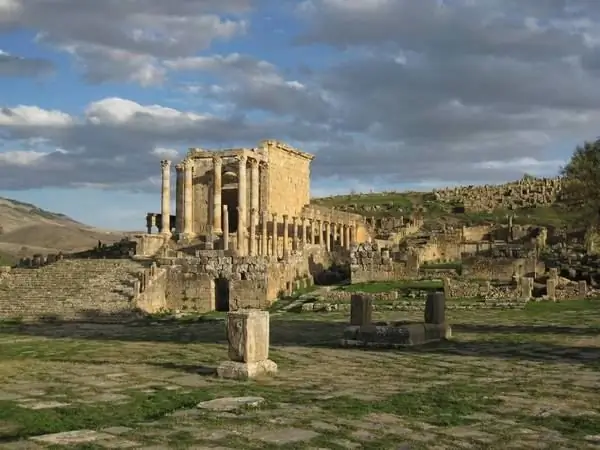
Description of the attraction
The ruins of the ancient Roman city of Dzhemila, which are located in a mountainous area near the city of Setif in Algeria, have been included in the UNESCO World Heritage List since 1982. Dzhemila's predecessor - Kuikul, a Roman fortress, was intended to house a military garrison defending a strategically important road. The city was founded in 96-97, the reign of Nerva.
For the construction of a defensive structure, the place was ideally located, surrounded on all sides by mountains and rivers, it was convenient for defense, access to the necessary resources was provided by the fertile land around. After some time, the fortress grew so much that it became a fairly large cultural and commercial center, with an amphitheater for three thousand spectators and forums. The bulk of the inhabitants are legionnaires who received land as payment for their service. The amphitheater was designed in such a way that any rustle from below could be heard perfectly in the uppermost row.
The beginning of sunset for Dzhemila was 431 years, when it was occupied by vandals. In 533, the former fortress was conquered by the Byzantine warriors, but climate change led to the complete drying up of the rivers, lack of precipitation. Olive groves and fields were destroyed, the city was abandoned by the inhabitants.
Excavations in 1909 revealed the basilicas of the first Christians, houses, one of the forums, a theater, baths with running water for hot and cold water. The best preserved temple is dedicated to Emperor Septimus Severus and his wife Julia. The Arc de Triomphe in honor of their son Caracalla is also in good condition. The so-called "European Courtyard" is an ensemble of 18 buildings. The Dzhemila Museum offers elements of mosaic panels, arches, columns for inspection.
The ancient city, despite the protection of an international organization, is destroyed under the influence of sand, wind and the human factor - the stones are simply taken apart for the construction of houses by local residents.






